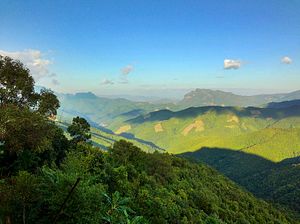On July 22, the Xepian-Xe Nam Noy dam under construction in the Attapeu province of Laos collapsed, leaving scores dead and thousands others homeless. The collapse has left a flood of questions – not just with respect to the dam itself, but the Lao government’s management of the country’s economy, politics, and society.
Despite concerns about the consequences of greater reliance on hydropower projects, including for its people, the government of Laos has long been adamant that it will use its extensive network of rivers and steep caverns to turn itself into the “battery of Southeast Asia” through construction of dozens of dams.
The people in Attapeu have now showcased the tangible impact of such government decisions. Compounding this has been concern around the government’s initial response. People reportedly had to wait days even before rescue teams were given permission to move in. They had to fend for themselves and rely information being disseminated from outside the country and delivered via mobile phones after flash floods smashed through six villages where at least 6,000 people live.
So questionable is the state of transparency with respect to government accounts that news reports have had to incorporate various levels of skepticism even in terms of the numbers of dead, missing, and homeless. The ruling communist government has delivered conflicting reports surrounding the death toll and extent of the damage undermining confidence in the regime, while some reporters and film crews had either been inhibited or obstructed from the area as well.
The dam collapse is therefore no doubt a major blow to the Lao government’s legitimacy. Coming amid a series of other challenges as well, including concerns about debt and an overreliance on China as well as international scrutiny over human rights violations, this will cast a dark shadow over the regime’s security.
With respect to the impact of the incident, the immediate focus has of course been on the people forced to live within the vicinity of the dam walls and their safety – subjected to the forces of mother nature, climate change and the workmanship in building those dams.
But it is worth emphasizing that the Lao government’s actions also speak to wider regional effects as well. For years, environmentalists, scientists, academics, activists, and journalists alike have been warning about the risks that increasing investments in hydropower pose for the wider region around the Mekong river, one of the world’s largest and longest rivers. This incident proves once again that the potential for an expensive, devastating calamity is real.
In a testament to the regionwide implications of such incidents, the flooding also impacted neighboring Mekong states as well. And there is already rising alarm in countries like Thailand about whether further flooding could occur as well.
Then there is a final set of questions, which remain unanswered, about what exactly accounted for the dam’s collapse. The South Korean firm that was the main builder of the project has already said that it did know that the dam was deteriorating just before it actually collapsed. Whether or not there will actually be any definitive answers to these flood of questions, however, is rather unlikely given the Lao government’s attitude to such issues.
Luke Hunt can be followed on Twitter @lukeanthonyhunt

































